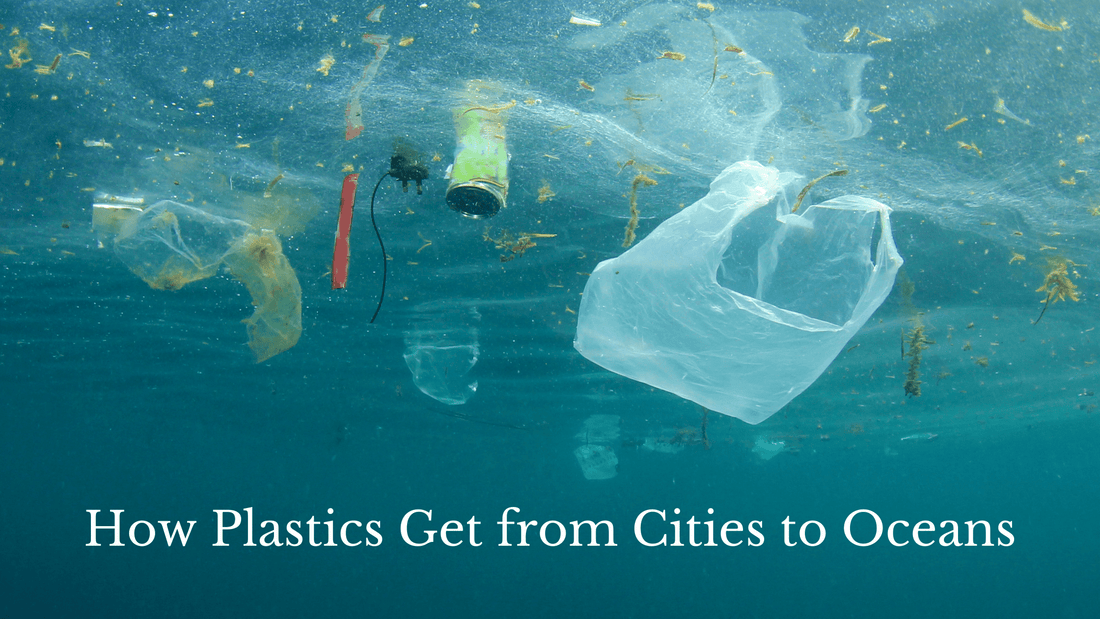
How Plastics Get from Cities to Oceans
Bethany NewarkOcean Plastics
Plastic has been found on shorelines of each of the Earth’s seven continents – yes, even Antarctica! 2 There is a misconception that ocean plastic is an ocean problem, i.e. that the plastic we hear about choking up the oceans is a result of fishing equipment or other activities that directly litter the seas. This is not the case though; even if a city is 100s of miles away from a beach, household waste can still make its way to the ocean1. In fact, 80% of the plastic in the ocean is from land sources and more plastic materials tend to be are found near areas with higher populations 1,2.
Where does ocean plastic come from?
The main ways plastic gets to the sea are by going down the drain, and from littering and landfills. Products we put down our drains such as sanitary products and wet wipes, as well as microbeads from cleaning products and cosmetics may end up in the ocean. In addition, microfibres released each time we do laundry are too small to be filtered out so they end up in the sea too. When plastic is not sent to be properly recycled, it ends up in landfill. On its journey to the landfill site it can be blown around and end up in drains and rivers, which carry it downstream to the ocean. Just like how plastics that gets dropped in the street get carried by water and wind through drains and watercourse to the sea1.
Why is ocean plastic a problem?
Once plastic gets to the ocean, it breaks down very slowly1. Over time, it decomposes into microplastics which are consumed by sea life and have even been found in commercial fish that is consumed by humans1,3. Some estimates say that over 90% of all seabirds have ingested plastic at some point and their nests can even contain plastic3,4.
What can we do?
Scientists predict that the amount of plastic entering the ocean each year could 10x by 2025 if we don’t make a change3. Some of the steps being taken include governments banning microbeads in cosmetics and cleaning products1. Additionally, many areas are stopping the use of plastic straws because of the effects they have in the ocean, and switching to reusable straws instead. This approach should expanded to other harmful plastic products too to have the greatest impact1. Some environmentally conscious changes that we make individually can impact how we each contribute to plastic in the ocean. Making sustainable switches to reusable products is a good first step. We can also make sure we recycle any plastic we do use correctly. In addition, choosing environmentally friendly cleaning products means you are not using microbeads that pollute the ocean; bonus points if these products are refillable like these ones!
Written By: Bethany Newark
References
